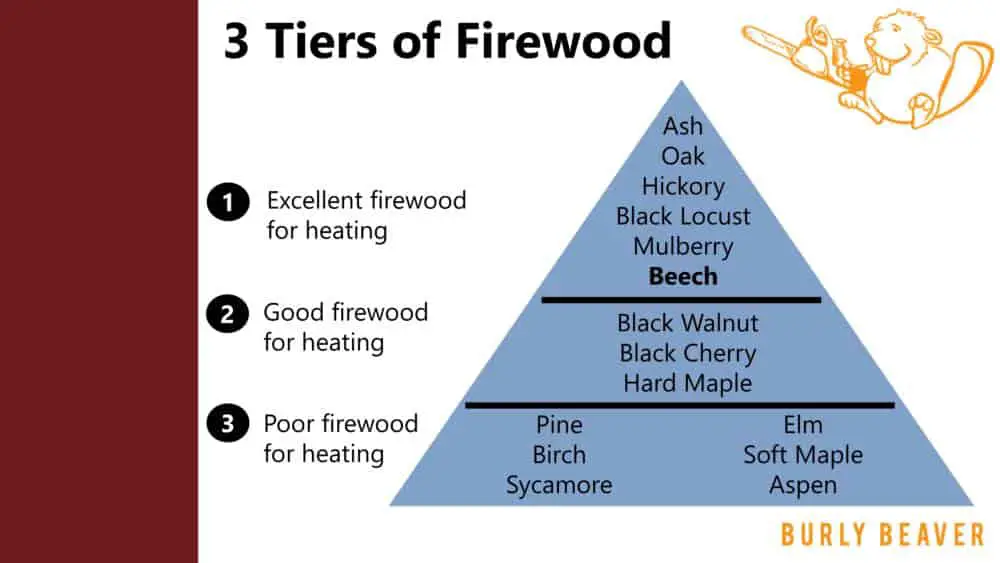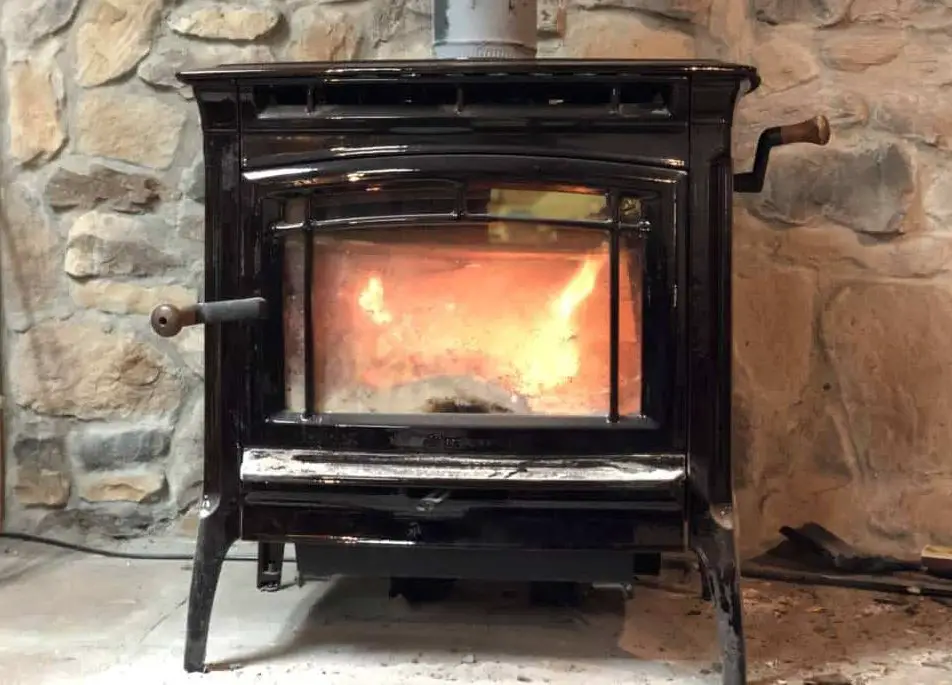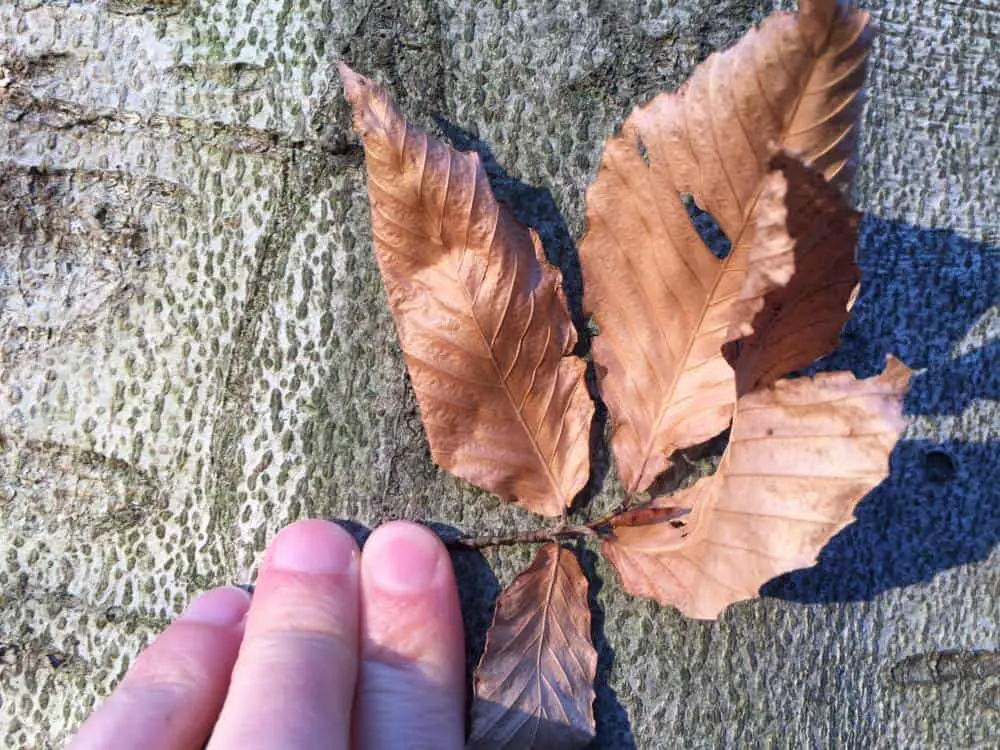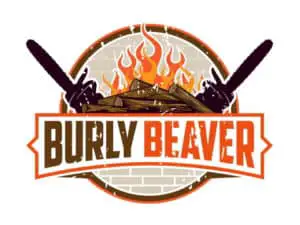There are a ton of different types of wood, and in this post, we’re digging into the details on Beech firewood. Let’s start with the big question: Is Beech good firewood?
Beech is exceptional firewood for heat output and it burns at 27.5 million BTUs per cord of seasoned wood. Beech also produces excellent coals, minimal smoke, and a nice fragrance. The primary disadvantage of beech firewood is that it’s difficult to split and the trees are typically hollow.
Let’s be real. You probably want more info than that. And I want to solve your problem. So, I put together the below guide on Beech firewood to fill in the gaps. Here’s what we’ll cover:
- Beech vs. Other Firewood (Comparison)
- Burn Qualities of Beech
- How to Identify Beech Firewood
- How Long to Season Beech Firewood
Also, check out the below Beech firewood summary video I made. It’s only about 6min long and covers 90% of what you’ll need to know. If you like this, also consider subscribing to the YouTube channel. I’ve got a bunch more firewood videos.
Beech vs. Other Firewood
To help you get an idea for how Beech compares to other types of firewood, we’ve put together a simple graphic below, which provides a snapshot of some of the most common types of firewood in our area (in the Midwest USA), and they are divided into 3 levels of quality.

The top tier (top of the pyramid) is the absolute best firewood you can burn, whereas the bottom of the pyramid is the firewood that will still produce heat, but is not ideal because of low heat output, excessive smoke, difficulty splitting, or some other reason.
In the next section, we’re going to see how Beech measures up against the 6 most important burn qualities for firewood. Let’s get to it!
The 6 Burn Qualities of Beech
1. Heat Output vs Other Wood
Beech is among the highest heat producers and is 3rd on my list of common firewood species (see below chart).
Heat Output of Common Firewood
| Species | BTUs | Weight/Cord (lbs) |
| Black Locust | 29.3 | 4192 |
| Hickory | 28.5 | 4072 |
| Beech | 27.5 | 3760 |
| Oak (White) | 26.4 | 3776 |
| Mulberry | 25.8 | 3712 |
| Ash | 24.2 | 3472 |
| Maple (Hard) | 23.9 | 3408 |
| Black Walnut | 22.2 | 3192 |
| Pine (Southern Yellow) | 22 | 2936 |
| Birch | 20.8 | 2992 |
| Sycamore | 24.1 | 2872 |
| Black Cherry | 20.4 | 2928 |
| Elm | 20 | 2872 |
| Maple (Soft) | 19 | 2752 |
| Aspen | 18.2 | 2160 |
The other common types of firewood that are close to Beech are Black Locust, Hickory, and Oak, which are all considered top-grade firewoods.
Heat is an important characteristic for firewood, but it’s not the only thing that you need to consider. There are some other things that might be deal-breakers for you, such as smoke output, sparking, and more.
In the next couple of sections, we’ll touch on more of the specific qualities of Beech and continue comparing it to other types of firewood.
2. Amount of Smoke
Beech produces very little smoke, especially when compared to Pine or Hard Maple, which are known to be big smoke producers.
Low smoke production is a common trait among our top tier firewoods, like Ash, Hickory, and Oak. However, Mulberry, which is an otherwise top-level firewood, does produce a moderate amount of smoke.
It’s also worth mentioning, that almost any wood will be VERY smokey if you burn it wet.
3. Does it Spark?
Some types of firewood pop or spark quite powerfully. Catalpa wood can even blow the front panel off of a wood stove it’s so explosive!
Most types of firewood are not that dramatic, but many of them still spark significantly. This can be an issue if you’re using an open-air fireplace, or if you’re burning outside and there are fire risks (like very dry conditions).
You obviously don’t want to start a forest fire (or a house fire). As a result, it’s important to monitor any type of open-air fire, and also to know the qualities of the firewood you are burning.
Beech firewood performs nicely in this category because it produces very few sparks. And it’s certainly not as bad as Mulberry, which is known to spark pretty significantly.
4. Smell or Fragrance
The fragrance of firewood is an important consideration, especially for recreational outdoor fires. And some types of firewood, like
Beech has a nice fragrance and is even used to make barrels for beer (as you may know, smell and flavor are closely related). However, most people would agree that Beech isn’t quite as good as Hickory or Cherry, which are known to have exceptionally nice fragrances.
My personal favorite firewood aroma is Eastern Red Cedar, because of it’s fresh, rich, and almost-tangy smell. We put an old Cedar stump on the fire the other day, and it was simply spectacular.
If you find all this talk of firewood aromas interesting, you should check out our article on the 11 best smelling types of firewood.
5. Does it Produce Coals?
Another factor that is commonly used for rating firewood is “coaling”. When any kind of firewood burns it produces coals, and the quality of the coals produced have a big impact on how long (and how well) the fire will continue burning.
For example, wood that has great coaling properties will work well as an overnight fuel in wood stoves, because the quality coals will help the fire stay hot through the night.
These long-lasting coals will also allow you to easily re-start a fire in the morning by simply adding more wood to the existing embers.
Beech has phenomenal coaling properties, as long as you can get enough of it in your stove/fireplace, it should burn a really long time.
The main challenge for Beech that other types of firewood don’t have, is that the logs are often hollow. So, if the wood isn’t split, then you won’t get as many coals with Beech simply because you would be able to fit less total wood into your stove.
6. Creosote Build-Up
If you’re using a fireplace or wood stove in your home, another important thing to consider is the maintenance of your chimney, and specifically preventing creosote build-up.
If you’ve not heard of creosote before, it’s a side product of burning wood, and it’s basically a black tar that is gradually deposited by wood smoke on the inside walls of a chimney.
Creosote isn’t a problem in small quantities, but if it gets built up, it can be quite dangerous. Build-up of creosote can reduce the ventilation of your chimney, and it’s also HIGHLY flammable, which can cause chimney fires.
To prevent creosote build-up, it’s important to properly maintain your stove and to have your chimney cleaned regularly.
In addition, you should only ever burn wood that is thoroughly seasoned (dried), because wet wood produces more creosote. Another big factor is the type of wood you’re burning.
In general, firewood that is very sappy will produce much more creosote build-up than firewood that is not as sappy.
Most hardwood firewood, including Beech, have low sap levels and produce less creosote than very sappy firewood like Pine.
Speaking of Pine, it’s probably the worst type of wood when it comes to creosote build-up. So much so that many people, including my family, completely avoid burning Pine in wood stoves.
Burn Quality Overall Comparison

Alright, now that we’ve covered the 6 most important burning qualities for Beech, let’s draw a few quick comparisons between Beech and other top tier firewood types like Ash, Oak, and Hickory.
First, I think it’s helpful to mention that you probably aren’t going to have every kind of wood close by, and a perfectly reasonable way to choose from a list of top firewood types is to go with what is most readily available.
However, if you do have a lot of firewood options, here’s some more info to help you break the tie.
- Beech has very high heat output and will outperform anything but the very best firewood, like Hickory and Black Locust!
- Beech produces very good coals and will burn long, although the hollow logs can reduce burn times by making it difficult to fit more wood in a stove / fireplace.
- Beech is very difficult to split compared with some of the other top-level firewoods like Ash. And, as we mentioned, the logs are typically hollow, so the total wood yield of a Beech can be lower than expected.
Hopefully that will help you see a few subtle distinctions between Beech, and other top-grade firewoods.
Next, let’s touch briefly on identifying Beech firewood, so you can be sure you know what type of wood you’re dealing with.
Identifying Beech Trees / Firewood
The easiest way to identify Beech trees / firewood, is by the bark. Beech trees have skin-like grey bark.
If you’ve ever seen a tree with a heart or initials carved into it, this usually happens on the trunks of Beech trees, because the bark is so tight and paper-like (and thus very easy to carve).
Here’s a photo of a Beech tree:

The great thing about this method, is it works with live and fallen trees, and it works in all seasons.
Of course, you can also identify Beech trees by the leaves. Beech trees have “alternate-simple” leaves.

Alternate means that the leaves grow on the twig in an alternating fashion (i.e. not directly across from each other, which is called “opposite”).
Simple means they grow directly on the twig, instead of being part of a compound leaf (like is the case with Black Walnut).
In addition the leaves are “toothed”, egg-shaped, and can get up to about 5 inches long.
If it’s winter, it’s even easier to recognize Beech trees, because their leaves tend to cling to the branches, even after the leaves of other deciduous trees have fallen for the year.
If you’d like to learn more tips for identifying common firewood, check out this post.
How Long to Season Beech Firewood
It takes about 1 year to properly season beech firewood. Beech is a heavy hardwood, which tend to take longer to dry compared with lighter softwoods. For example, a hardwood like oak can take over 2 years to season, and a softwood like pine can take as little as 6 months.
If you’re new to this terminology, for wood to be seasoned basically just means that it has been thoroughly dried and is no longer “green”. If you’d like a more thorough explanation, you can read this post.
Different types of firewood will require more (or less) time to dry, and you should always plan to burn firewood that is completely seasoned.
Exactly how long it will take depends on several factors, including the climate where you’re located (e.g. wood dries faster in Texas than in Oregon), and if you’ve properly split and stacked the wood.
If you’ve found this post helpful/interesting, then you’ll also want to check-out our comparison of 15 common firewood species.
